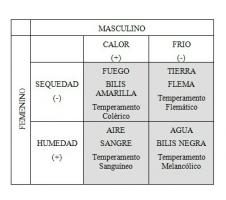Psychasthenia: what is it and what disorders is it associated with?
There are concepts within the field of psychology that have existed practically since its beginnings and although currently it is not used in the same way, they can still be used for the evaluation and identification of a series of alterations or disorders psychological.
One of them is psychasthenia, currently conceived as a personality trait. Those who present this characteristic can experience high levels of anxiety, obsessions and even episodes of depersonalization.
- You may be interested in: "Types of Anxiety Disorders and their characteristics"
What is psychasthenia?
Although the conception of this has changed a lot over the years, psychasthenia is considered as an alteration of psychological or mental tension characterized by present symptoms associated with phobias, obsessions, compulsions or anxiety disorders.
This term was first described in 1903 by the psychologist and neurologist Pierre Janet, who developed a clinical picture that included the different varieties of phobias, anxieties and obsessions typical of his symptomatology.
Despite this, at present psychasthenia is not considered a clinical disorder or diagnosis, it is still listed as a one more personality factor within the clinical evaluation scales of the MMPI, an assessment test used to detect personality and behavior disturbances.
In this sense, as a personality trait, psychasthenia is distinguished by causing a lack of control of conscious thought and memory, which translates into scattered thoughts and language or a tendency to forget what was being talked about.
This disjointed speech is the result of unordered thought processes, which are manifested through sentences that are not very congruent and that are usually incomprehensible to the people who listen to them. In addition, the person with features of psychasthenia tends to manifest intense and irrational fears associated with their attention and concentration difficulties. As well as serious pictures of stress and anxiety.
All these symptoms mean that psychasthenia is understood as a breakdown of psychological tension, which can become permanent, degenerative and, according to some theorists, hereditary.
What symptoms does it present?
Although it is not considered a psychological disorder or disorder with a diagnostic label specific, psychasthenia is characterized by presenting a series of signs in those people in whom Presents itself.
These symptoms characterize the personality of the person, which It is defined as being anxious in nature and presenting phobic, obsessive or compulsive symptoms. among others. The severity of this clinical picture can vary between the people who present it. However, these symptoms are usually quite intense, reaching the point of interfering with the person's daily life and their well-being.
Next, we will describe the main characteristics or symptoms of the psychasthenic personality.
1. Anxiety
Traditionally it has been determined that anxiety is the main symptom of psychasthenia, which causes and generates the rest of the anxious symptoms that characterize it. People with psychasthenia tend to manifest states of anxiety and tension constantly high, which leads to nervousness and anguish on a regular basis.
2. phobias
Phobias consist of a series of mental disorders or alterations that are characterized by causing in the person feelings of fear and disproportionate and irrational fear before the appearance of certain stimuli, objects or specific situations.
This variety of fear disorder generates clinically significant anxiety symptoms as long as the person is in front of the stimulus considered phobic, causing it to carry out all kinds of behaviors and behaviors to avoid or flee the situation feared.
3. nervous tics
Due to the high degree of tension caused by psychasthenia, it is very possible for the person to experience a series of sudden and uncontrolled movements and tics known as tics. These muscular reactions are distinguished by being convulsive, sudden and exaggerated..
4. obsessions
Obsessions are traditionally defined as a series of mood disorders caused by the development of fixed and recurring ideas and thoughts in the person's mind.
These obsessive thoughts are usually associated with a specific idea that appears on a recurring basis, causing serious concern, high levels of anguish and anxiety.
5. compulsions
Associated with obsessive ideas or thoughts we find compulsions. This concept refers to the need that the person feels for conducts or repetitive behaviors.
These behaviors are carried out with the aim of reducing anxiety reactions caused by obsessive ideas and thoughts. Although obsessive-compulsive reactions form a specific clinical picture of OCD, in psychasthenia they appear as part of its symptoms.
- You may be interested in: "Obsessive-Compulsive Disorder (OCD): what is it and how does it manifest itself?"
6. depersonalization
The last of these symptoms is depersonalization. Depersonalization consists of a disorder by which the person experiences an altered perception of herself in which he feels that his mind is detached from his body and that he can perceive it from the outside, as an observer.
Concept according to the MMPI
As mentioned above, although psychasthenia is no longer considered a mental illness or disorder as such, the MMPI continues to pick it up as a pathological personality disorder very close to obsessive-compulsive disorder.
In addition, the MMPI user manual adds that these people also tend to experience extreme and abnormal feelings of guilt, pathological concentration problems or tendency to self-criticism.
Although it cannot be considered as a diagnostic label, this subscale facilitates the identification of personality traits in which lack of control of conscious thought, alterations in memories and a tendency to anxiety and thinking prevail obsessive.

